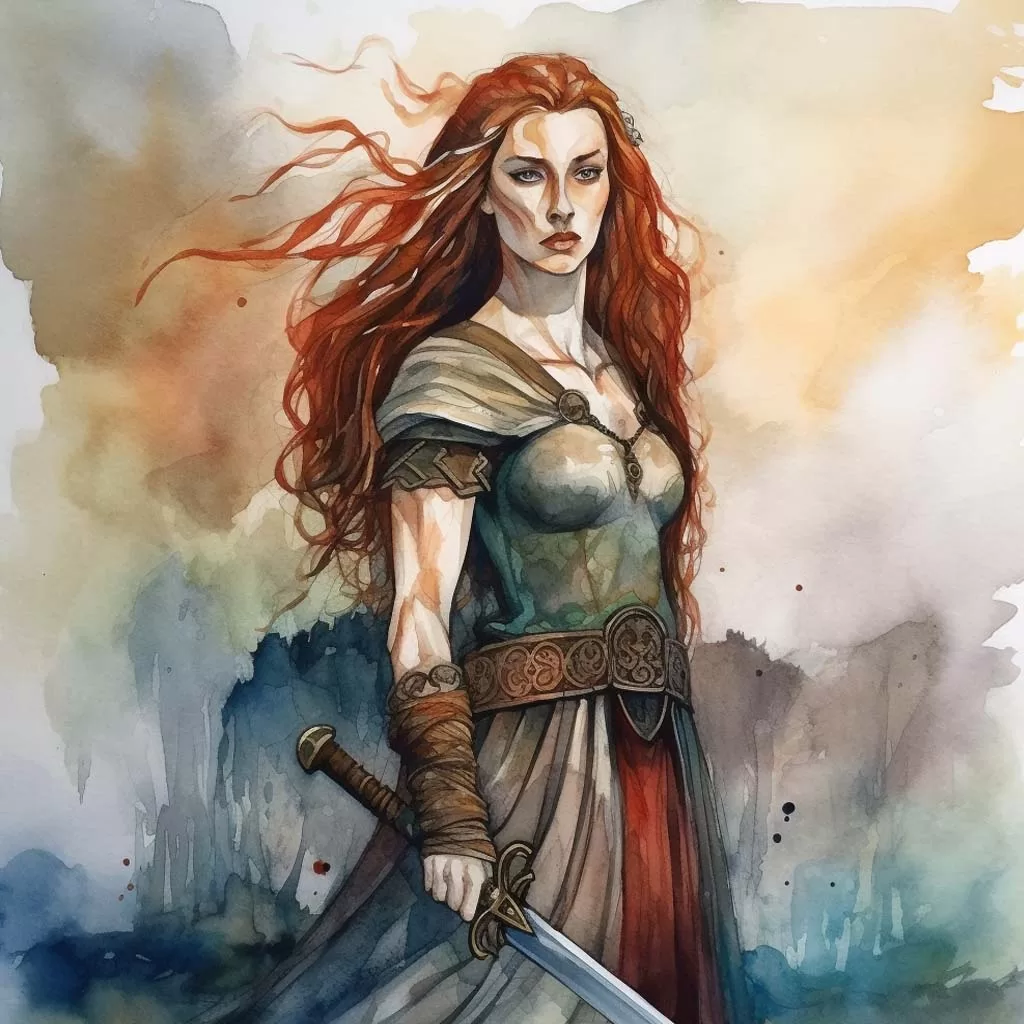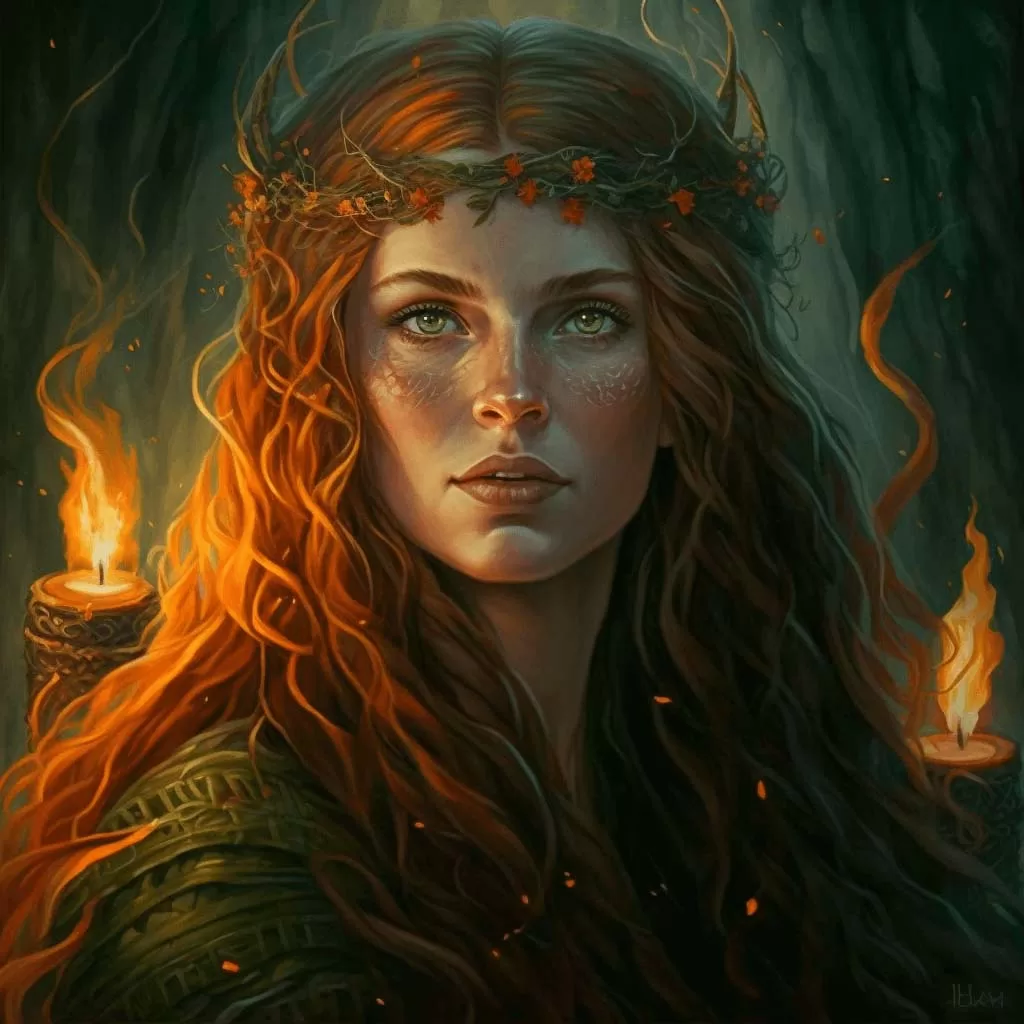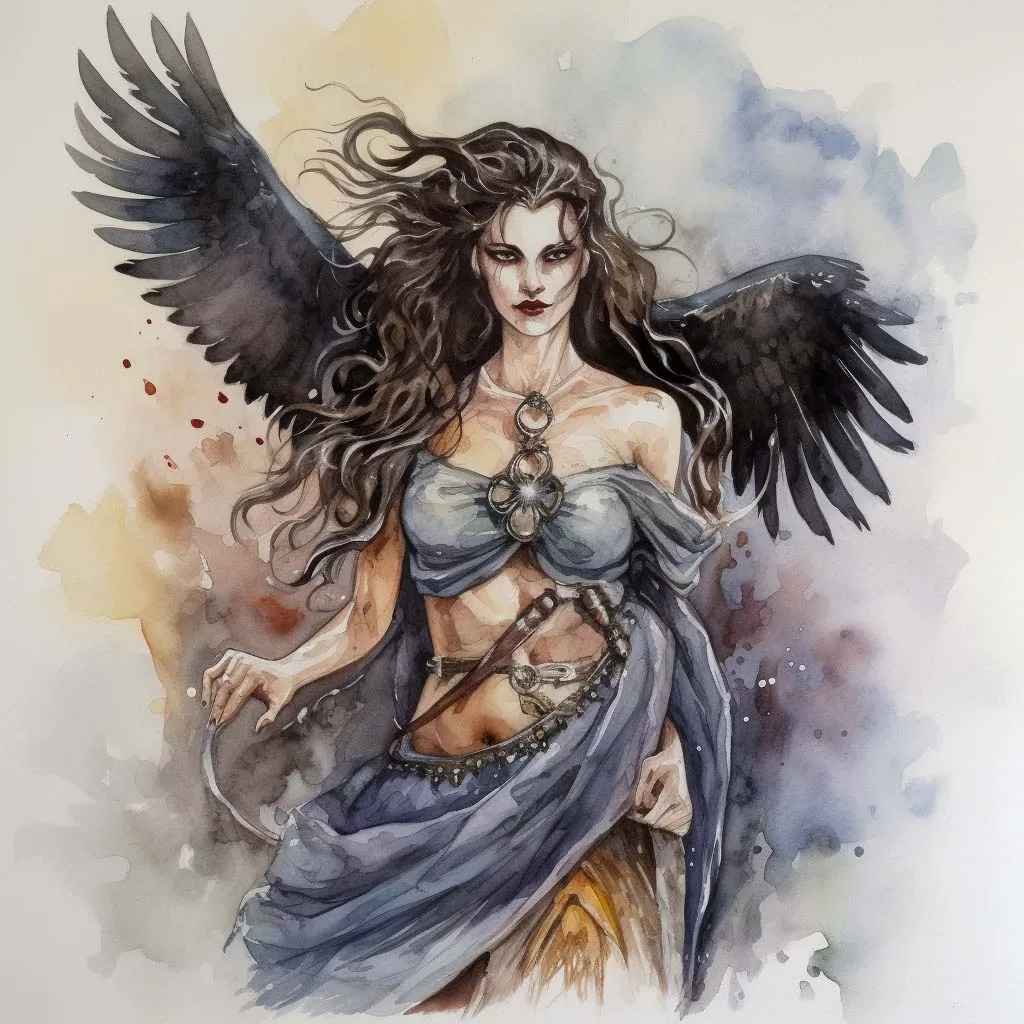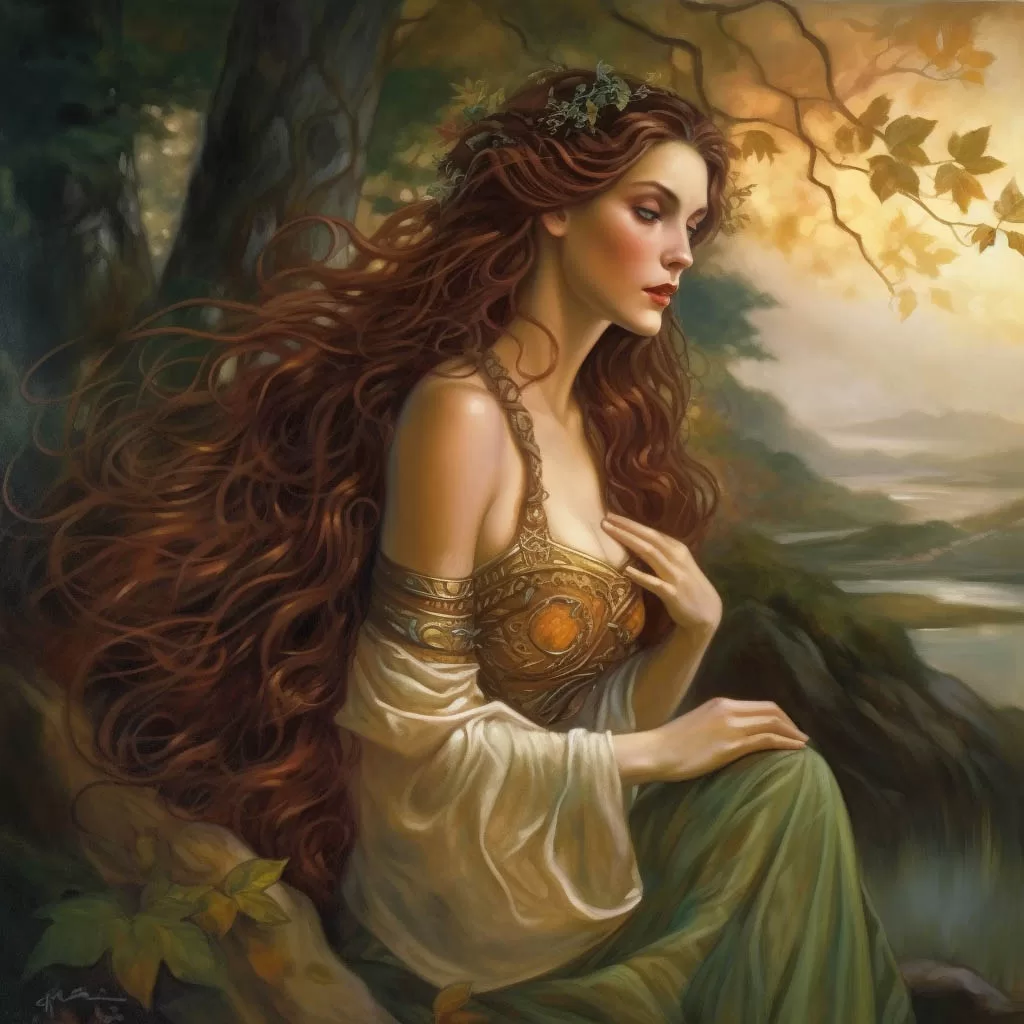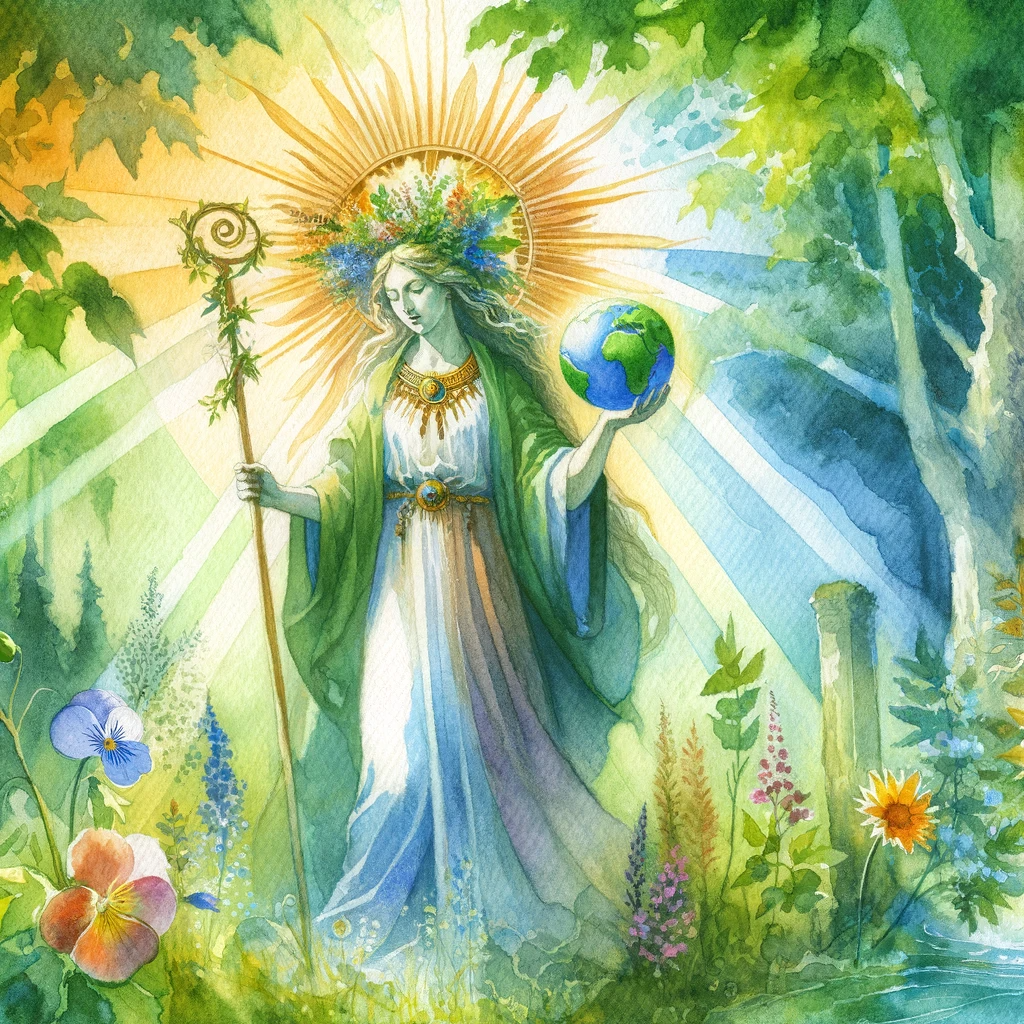In the rich tapestry of Celtic mythology, few figures are as intriguing and multifaceted as Badb, the goddess of war, death, and prophecy. Often associated with the Morrígan, a triad of war goddesses, Badb embodies the fearsome and foreboding aspects of battle, the inevitability of death, and the mysterious power of foresight.
| Origins | Accounts | Roles | Worship |
This article delves into the origins, myths, and symbolism of Badb, exploring her role within Celtic culture and her lasting legacy in contemporary interpretations.
Origins and Etymology
The name “Badb” (pronounced as “BAHV” or “BAWB“) originates from the Old Irish word for “crow” or “raven“, reflecting her association with these birds, which are often seen on battlefields. The connection between Badb and these birds symbolizes not only death but also the transition of the soul and the goddess’s role as a harbinger of doom. Badb is part of the Tuatha Dé Danann, a supernatural race in Irish mythology, and she is often mentioned in conjunction with her sisters, Macha and the Morrígan, forming a trinity known as the Morrígna.
Mythological Accounts
Badb in Irish Literature
Badb’s presence is felt across several key texts of Irish literature, including the Ulster Cycle and the Mythological Cycle. In these stories, her appearances are both direct and symbolic, often intertwined with the fates of warriors and kings. One of the most notable references to Badb is in the Táin Bó Cúailnge (The Cattle Raid of Cooley), where she is seen inciting fear and chaos among soldiers, foretelling their doom, and reveling in the carnage of war.
Symbolism and Roles
War and Chaos
Badb is primarily seen as a goddess of war, embodying the chaos and terror of battle. She is often depicted as a figure who revels in the confusion and bloodshed of conflict, using her powers to influence the outcome of fights. Her appearance before a battle was believed to be an omen of death, and she could sway the tide of warfare with her enchantments.
Death and the Afterlife
As a deity associated with death, Badb’s role extends beyond the battlefield. She is seen as a guide for the souls of the dead, leading them to the afterlife. Her connection with crows and ravens, scavengers that are often present at sites of death, reinforces her association with the end of life and the transition to the world beyond.
Prophecy and Fate
Badb’s ability to foretell the future is another significant aspect of her mythology. She would often deliver prophecies of doom, predicting the downfall of warriors and the outcomes of battles. This aspect connects her with the broader Celtic belief in fate and the power of prophecy to shape the lives of mortals.
Worship and Cult
The worship of Badb, like that of many ancient deities, is not well-documented. However, it is believed that she was venerated in areas associated with warfare and death, such as battlefields or burial grounds. Rituals and offerings may have been made to appease her or to seek her favor in war and prophecy.
Symbolism in Art and Culture
In art and literature, Badb is often represented alongside crows or ravens, symbolizing her connection to death and the battlefield. She may also be depicted wielding weapons or engaging in acts of prophecy. This imagery underscores her dual nature as both a bringer of death and a guide to the afterlife.
Badb in Modern Culture
In contemporary times, Badb and the mythology surrounding her have experienced a resurgence in popular culture. She appears in literature, music, and media, often as a symbol of strength, rebellion, or foreboding. This modern interpretation reflects a continued fascination with the complexity and depth of Celtic mythology.
Badb, the Celtic goddess of war, death, and prophecy, remains a compelling figure in the annals of mythology. Her stories and symbolism speak to the human experience of conflict, mortality, and the unknown future. Through the ages, Badb has evolved from a deity revered by ancient peoples to a symbol of power and mystery in the modern world, illustrating the enduring legacy of Celtic myth and its capacity to inspire across generations. She has earned her place amongst the greatest Celtic goddesses.
References
- “Early Irish Myths and Sagas.” Translated by Jeffrey Gantz. Penguin Classics.
- “The Táin: From the Irish epic Táin Bó Cúailnge.” Translated by Thomas Kinsella. Oxford University Press.
- “Celtic Mythology: Tales of Gods, Goddesses, and Heroes.” Philip Freeman. Oxford University Press.
- “The Encyclopedia of Celtic Mythology and Folklore.” Patricia Monaghan. Facts on File.
- “Celtic Myths and Legends.” Peter Berresford Ellis. Carroll & Graf Publishers.



